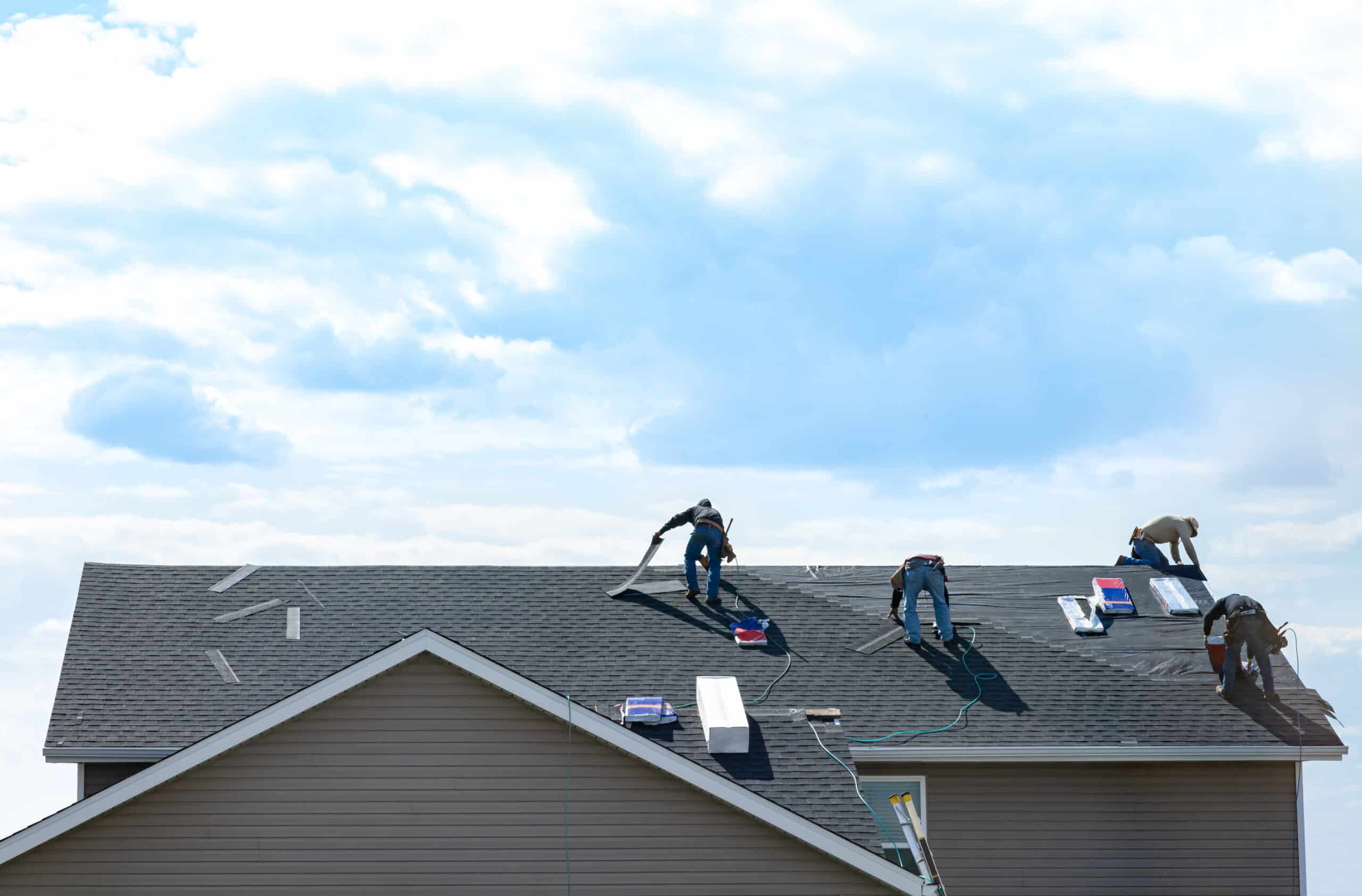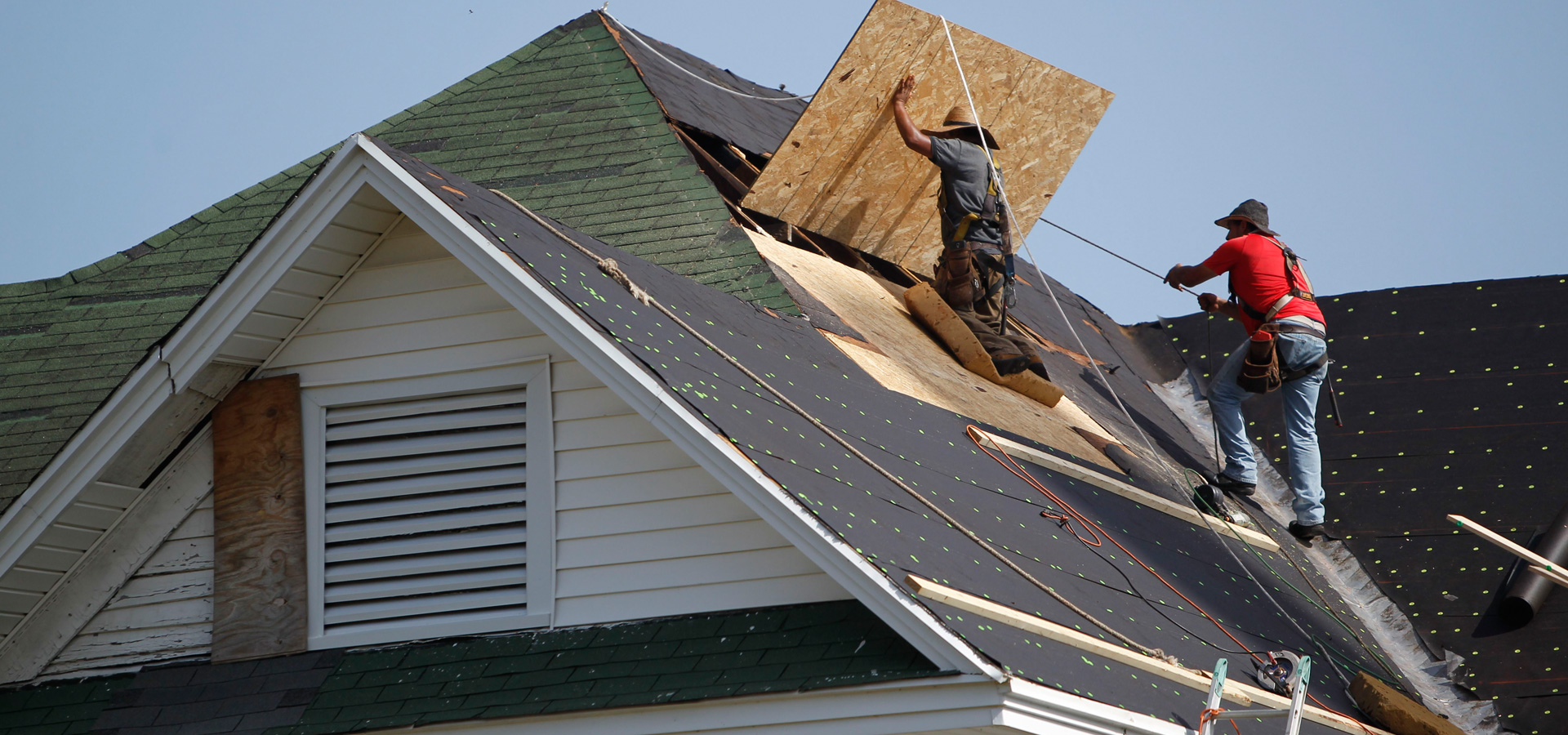Checklist to Use When Hiring roofing contractors honolulu
Wiki Article
The Ultimate List for Roof Install: Guaranteeing Top Quality and Longevity
The procedure of mounting a roofing system calls for mindful attention to information. A thorough list can assist guarantee high quality and sturdiness throughout the project. From examining the existing roofing problem to selecting the right materials, each action is essential. Proper prep work and devices play an essential role in achieving a successful installation. Numerous neglect the relevance of final inspections and recurring maintenance. Understanding these components can considerably impact the longevity of a brand-new roof.Examining Your Current Roof Condition
How can one properly identify the problem of their present roofing? A thorough assessment is important for reviewing a roof's integrity. Homeowners should start by examining the roofing from the ground, seeking noticeable indicators of wear such as missing out on roof shingles, sagging areas, or discoloration. Closer inspection can be done by accessing the roofing itself, where one ought to look for broken or curled roof shingles and evaluate blinking around vents and chimneys.Additionally, the interior of the home warrants focus; water discolorations or mold growth on ceilings and wall surfaces might indicate leakages. Attic inspections can disclose prospective problems, such as inadequate air flow or indicators of moisture.Regular assessments, ideally two times a year, can help recognize problems early and stop pricey repair work. By comprehending the roof covering's present state, house owners can make informed decisions about essential upkeep or replacements.Choosing the Right Roof Covering Materials
When picking roof materials, what elements should house owners consider to assure a resilient and reliable choice? The climate plays a considerable function; materials ought to stand up to neighborhood weather condition conditions, whether it's hefty rainfall, snow, or extreme sun. Next, the long life of the product is vital; choices like steel or slate deal prolonged life-spans contrasted to asphalt roof shingles. House owners should likewise examine the product's weight, as this can affect the structural honesty of the home. In addition, visual appeals issue; the picked product must enhance the overall architectural design. Energy performance is an additional factor to consider; some materials reflect warm, minimizing air conditioning costs. Budget plan restrictions will dictate selections; while some materials might have a reduced ahead of time expense, lasting longevity can lead to higher financial savings. By considering these factors, home owners can make informed decisions that enhance their roofing system's quality and durability.Getting ready for Installment
Before the installment procedure begins, homeowners need to guarantee that their residential or commercial property is appropriately prepared to suit the brand-new roof covering. This prep work entails numerous crucial steps to ensure a smooth and reliable installation. First, property owners need to get rid of the location around your house of any type of particles, devices, or furnishings that can impede accessibility for service providers. Additionally, it is important to notify next-door neighbors concerning the future job to minimize disruption and secure cooperation.Next, homeowners must evaluate their existing roofing and structural components, dealing with any kind of potential problems such as rotting wood or leaks that could affect the installment. Protecting required permits and sticking to neighborhood building codes is vital for compliance and safety. Ultimately, setting up the installment throughout positive weather assists protect against hold-ups and guarantees that the job proceeds without problems. Correct preparation sets the structure for a successful roof covering task, inevitably enhancing the long life and efficiency of the new roofing.
Essential Tools and Devices
In roof installation, having the right tools and tools is essential for an effective project. This includes vital security equipment, numerous roofing installation tools, and reliable material dealing with equipment. Correct preparation and selection of these items can significantly improve efficiency and security on the work site.Security Equipment Needs
Safety equipment is an important element of any type of roofing system installation task, ensuring the health of employees at elevated elevations. Crucial safety and security equipment consists of construction hats, which protect versus dropping debris, and safety goggles to secure the eyes from dust and particles. Non-slip footwear is substantial for preserving grip on steep surface areas, while harnesses and lanyards give autumn security, stopping major injuries. Handwear covers help safeguard hands from sharp materials and minimize fatigue throughout prolonged periods of work. In addition, high-visibility vests enhance exposure, promoting recognition among employee and close-by employees. Using ear protection may additionally be a good idea in noisy atmospheres. In general, adhering to security equipment needs is crucial for a secure and effective roofing setup process.
Roof Installment Devices
Appropriate security procedures lay the foundation for a successful roofing job, however having the right devices and devices is similarly vital. Necessary tools for roof covering installation include a ladder, permitting secure access to the roofing system, and a roofing nail gun to ensure reliable and secure fastening of products. A chalk line is vital for noting straight lines, while an utility blade is necessary for reducing roofing materials properly. Additionally, a pry bar help in getting rid of old tiles. Employees ought to additionally have a degree to validate appropriate placement and drainage. Lastly, a great pair of work handwear covers shields hands while supplying grasp. With each other, these devices assist in a smooth roofing process, enhancing both high quality and longevity.Product Handling Equipment

A selection of product handling devices is vital for a reliable roof setup process. Equipment such as forklifts, raises, and dollies promote the motion of hefty materials like shingles and underlayment to the job site and onto the roof. Utilizing scaffolding and ladders assurances risk-free accessibility to raised areas while decreasing the threat of injury. Tarpaulins and bins are needed for appropriate storage and organization of products, stopping damage and guaranteeing simple access. Furthermore, a crane might be required for larger roofing projects to lift significant materials directly onto the roofing. Correct training being used this tools is vital; it improves process efficiency and adds to total project security, guaranteeing a successful roof installment.
Step-by-Step Setup Process
The step-by-step setup process is important for a successful roofing system installment. It begins with preparing the roof covering surface area, followed by the appropriate installation of underlayment, and wraps up with the effective safeguarding of roof covering materials. Each of these actions plays an essential duty in making certain the toughness and performance of the roofing.Prepare the Roofing Surface
Preparing the roof covering surface area is crucial for guaranteeing an effective installment of roofing materials. This process starts with a comprehensive evaluation to identify any kind of existing damages or debris. Any kind of loose roof shingles, extending nails, or old roofing products need to be removed to develop a clean, smooth structure. Next, the roof deck should be checked for rot or structural issues, as these can compromise the stability of the new roofing. After repair services, a thorough cleansing is needed; this includes sweeping away dirt, leaves, and any various other contaminants that could impede bond. Guaranteeing appropriate drainage and ventilation is crucial, as these elements influence the durability of the roof. A well-prepared surface establishes the stage for excellent installment and toughness.Install Underlayment Appropriately
Mounting underlayment correctly is essential for boosting the overall efficiency of the roof. The process starts with selecting the appropriate underlayment material, which can consist of felt, synthetic, or rubberized choices. Next off, verify the roofing system surface is tidy and completely dry before laying the underlayment - commercial roofing honolulu. Begin at the lowest point of the roofing, rolling out the underlayment horizontally and overlapping each row by at least six inches. It is necessary to safeguard the underlayment in place with staples or roofing nails, preventing voids or wrinkles that might endanger water resistance. Trim excess material at the edges, ensuring a neat finish. This careful setup action is vital for giving an included layer of protection against moisture and improving durabilityProtect Roof Covering Materials Properly
After confirming the underlayment is properly installed, the next step entails safeguarding the roofing materials properly. The roof covering contractor must gather all essential materials, including tiles, nails, and blinking. Beginning at the least expensive factor of the roof, roof shingles must be laid in a staggered pattern, confirming correct overlap to stop leaks. Each tile must be secured with nails, making use check here of the producer's recommended spacing and quantity. It is important to drive nails straight, preventing over-penetration, which can endanger the material. Blinking need to be mounted around chimneys and vents to boost waterproofing. Lastly, the professional should conduct a comprehensive evaluation to verify all products are firmly secured, as this will substantially affect the roof's general toughness and long life.Conducting Final Assessments
Thorough final evaluations are vital to guarantee that a recently mounted roof covering meets all security and high quality criteria. This critical action involves assessing the entire roof covering system for any kind of potential issues that may develop post-installation. Inspectors need to examine the positioning of roof shingles, ensuring they are effectively safeguarded and without flaws. Blinking and air flow systems must also be examined for right setup and functionality.Additionally, the assessor needs to examine seamless gutters and downspouts to validate they are appropriately placed to help with water drain. Any type of indications of leakages, misaligned products, or insufficient securing around penetrations must be dealt with quickly. Roofers should also make certain that all particles from the setup process is removed, leaving the website tidy and secure. Conducting these comprehensive inspections aids protect against future difficulties, inevitably prolonging the lifespan of the roof and providing home owners with tranquility of mind concerning their financial investment.Preserving Your New Roofing System
Correct upkeep is essential for ensuring the long life and performance of a new roof covering. Property owners should perform regular assessments a minimum of twice a year, ideally in springtime and fall, to determine potential problems early. Throughout these inspections, they should try to find signs of damage, such as missing out on shingles, leaks, or debris accumulation, which can restrain drainage and promote mold growth.Cleaning seamless gutters and downspouts is essential, as stopped up systems can result in water damage and architectural problems. In addition, cutting overhanging branches can stop abrasion and debris buildup on the roofing surface.It's additionally recommended to arrange expert assessments every few years to evaluate the roofing system's condition completely. Maintaining documents of upkeep tasks and fixings can assist track the roofing's performance in time (commercial roofing honolulu). By adhering to a consistent upkeep routine, property owners can protect their financial investment and ensure their new roof stays effective for many years aheadRegularly Asked Concerns
For how long Does a Normal Roofing System Installation Take?
The period of a common roof covering installation differs based upon aspects such as roofing dimension, products, and weather. Typically, it can take anywhere from one day to several weeks to finish the installment.Can I Set Up a New Roofing System Over an Existing One?
The question of mounting a new roofing system over an existing one typically emerges. Lots of property owners consider this option for cost-effectiveness, however it is necessary to assess neighborhood building regulations and the architectural stability of the existing roof covering.What Allows Are Needed for Roof Installment?
Before installing a roof covering, one should examine local laws. Normally, structure licenses are called for, along with assessments to guarantee conformity with safety criteria and zoning legislations. Consulting with neighborhood authorities is vital for proper guidance.What Service warranties Are Available for Roof Materials?
Different warranties exist for roof materials, normally including manufacturer service warranties covering flaws and performance. Furthermore, some contractors use workmanship service warranties, ensuring setup top quality. Buyers ought to very carefully assess terms to understand protection duration and restrictions.Just How Can Weather Condition Impact the Installation Process?
Weather significantly influences the installation procedure, as rainfall, snow, or extreme temperature levels can postpone job, affect material bond, and concession safety. Correct planning and organizing around weather condition forecasts are essential for successful roofing installment.Report this wiki page